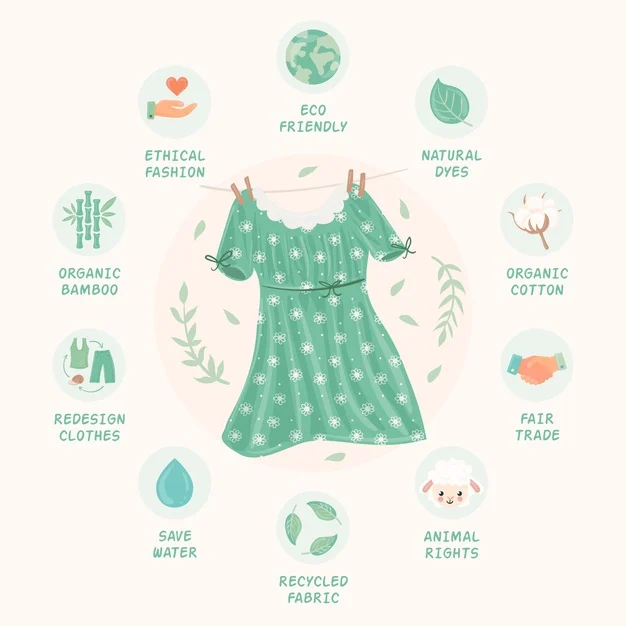Introduction
Fashion is one of the most dynamic industries in the world, constantly evolving with trends and cultural shifts. However, in recent years, a growing awareness of environmental concerns has led to a significant transformation—sustainable fashion. Consumers are now demanding more eco-friendly and ethical choices, pushing brands to adopt greener production methods.
But what exactly is sustainable fashion, and how are brands adapting to this change? In this article, we’ll explore the meaning of sustainability in fashion, highlight the leading brands making a difference, and discuss how you, as a consumer, can contribute to a greener fashion industry.
What is Sustainable Fashion?
Sustainable fashion refers to the approach of designing, producing, distributing, and consuming clothing in ways that minimize environmental impact and promote ethical labor practices. It focuses on several key aspects:
- Eco-friendly materials – Using organic, biodegradable, and recycled fabrics instead of synthetic fibers that contribute to pollution.
- Ethical production – Ensuring fair wages, safe working conditions, and humane treatment of workers.
- Reduced waste – Adopting circular fashion models where clothes are recycled, upcycled, or designed for longevity.
- Slow fashion movement – Encouraging quality over quantity, promoting mindful shopping habits.
The shift towards sustainability is not just a trend—it is a necessity. The fashion industry is one of the largest polluters globally, with textile production accounting for 10% of global carbon emissions and 20% of global wastewater. With such alarming statistics, sustainability in fashion is more crucial than ever.
How Brands Are Going Green
Many brands, from high-end luxury labels to fast fashion retailers, are taking steps toward sustainability. Here are some of the key strategies being implemented:
1. Using Sustainable Fabrics
Traditional fabrics like polyester and nylon are made from petroleum-based materials, which take hundreds of years to decompose. In response, brands are switching to eco-friendly fabrics such as:
- Organic cotton – Uses less water and fewer pesticides than conventional cotton.
- Hemp – A highly sustainable plant that requires little water and no pesticides.
- Tencel (Lyocell) – A biodegradable fabric made from wood pulp.
- Recycled polyester – Made from plastic waste like discarded bottles.
Brands like Levi’s have introduced Water<Less™ technology, reducing water usage in denim production by up to 96%.
2. Ethical Labor Practices
Many fashion brands have been criticized for their unethical labor conditions, particularly in countries where garment workers are underpaid and overworked. Ethical brands are changing this by ensuring:
- Fair wages – Providing workers with a livable income.
- Safe working conditions – Eliminating sweatshops and dangerous work environments.
- Transparency – Companies like Everlane openly share information about their factories and production costs.
3. Recycling and Upcycling Fashion
Instead of throwing away old clothes, brands are finding ways to give them a second life:
- Patagonia’s Worn Wear program allows customers to return used clothing for store credit.
- Nike’s Move to Zero initiative turns old sneakers into new products.
- H&M Conscious Collection offers recycling bins in stores to encourage customers to drop off old clothes.
4. Reducing Carbon Footprint
Brands are also working to minimize their carbon emissions by:
- Using renewable energy in production facilities.
- Implementing carbon offset programs.
- Sourcing materials locally to reduce transportation emissions.
Brands Leading the Sustainable Fashion Movement
Some brands have fully embraced sustainability, making it a core part of their identity. Here are a few making a difference:
1. Patagonia
One of the pioneers in sustainable fashion, Patagonia has been advocating for ethical and eco-friendly practices for decades. They:
- Use recycled and organic materials.
- Offer a lifetime repair program for their products.
- Donate a percentage of profits to environmental causes.
2. Stella McCartney
A leader in sustainable luxury fashion, Stella McCartney’s brand is known for:
- Vegan leather and fur-free designs.
- Cutting-edge sustainable fabric innovations.
- Zero-waste production techniques.
3. Reformation
Reformation has redefined fast fashion by making it sustainable. They:
- Use eco-friendly materials and processes.
- Offer transparency by listing the environmental impact of each product on their website.
- Produce clothes in small batches to minimize waste.
4. H&M Conscious Collection
While H&M is a fast fashion brand, its Conscious Collection is a step towards sustainability. They:
- Use organic cotton and recycled polyester.
- Allow customers to recycle old clothes in-store.
- Aim to become climate positive by 2040.
How Consumers Can Support Sustainable Fashion
As a consumer, you have the power to drive change by making conscious fashion choices. Here’s how you can contribute:
1. Buy from Sustainable Brands
Choose brands that prioritize ethical production, eco-friendly fabrics, and transparency in their supply chains. Look for certifications like:
- Fair Trade Certified
- Global Organic Textile Standard (GOTS)
- OEKO-TEX Standard 100
2. Invest in Quality Over Quantity
Instead of buying cheap, trendy clothes that wear out quickly, invest in high-quality pieces that last longer. A well-made garment can be worn for years, reducing the need for frequent replacements.
3. Shop Second-Hand or Thrift
Thrifting is an excellent way to reduce waste while finding unique, stylish pieces. Apps like Depop, ThredUp, and Poshmark make second-hand shopping more accessible than ever.
4. Care for Your Clothes Properly
Extend the life of your clothes by:
- Washing in cold water to prevent fabric damage.
- Air drying instead of using a dryer.
- Repairing minor damages instead of discarding garments.
5. Participate in Clothing Swaps and Recycling Programs
- Join local clothing swaps to exchange clothes instead of buying new ones.
- Recycle old clothes through programs like Nike’s Reuse-A-Shoe or H&M’s Garment Collection Program.
The Future of Sustainable Fashion
As sustainability continues to shape the industry, we can expect more innovations such as:
- Biodegradable clothing that decomposes naturally.
- 3D-printed fashion that reduces textile waste.
- AI-driven sustainable shopping experiences, helping consumers make eco-friendly choices.
Governments are also stepping in by enforcing stricter environmental laws and promoting sustainable practices. Brands that fail to adapt may struggle to stay relevant in an increasingly eco-conscious world.
Conclusion
Sustainable fashion is more than just a passing trend—it’s a necessary evolution in the industry. From eco-friendly fabrics to ethical labor practices, brands are making strides toward a greener future. However, change doesn’t rest solely on designers and manufacturers. Consumers play a vital role in shaping the industry by making conscious choices, supporting ethical brands, and reducing waste.
The next time you shop, ask yourself: Is this purchase sustainable? Small changes in our shopping habits can collectively create a big impact, helping to build a fashion industry that is both stylish and responsible.

